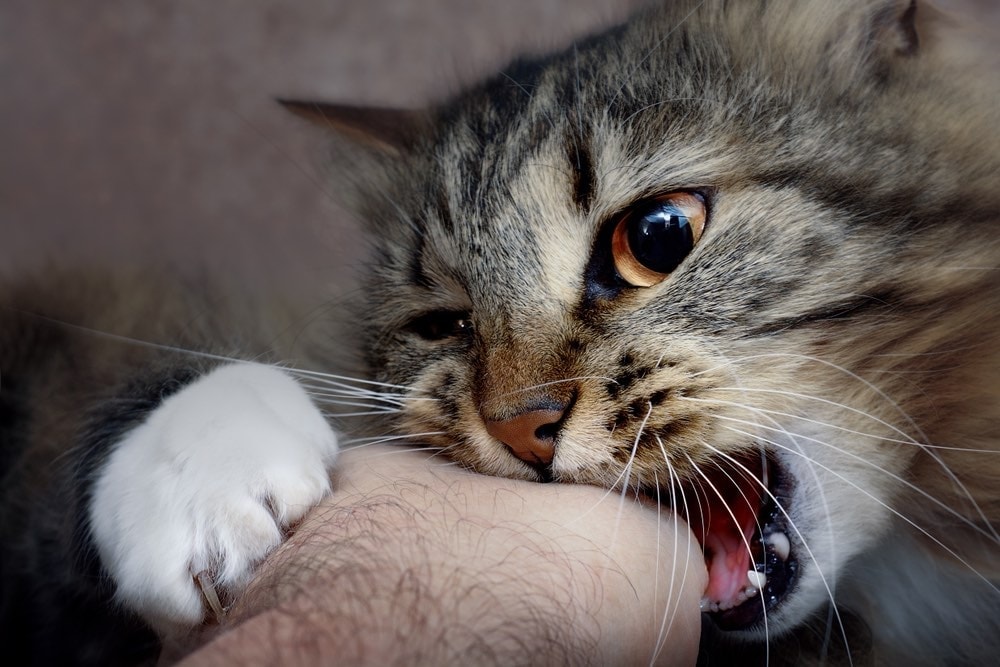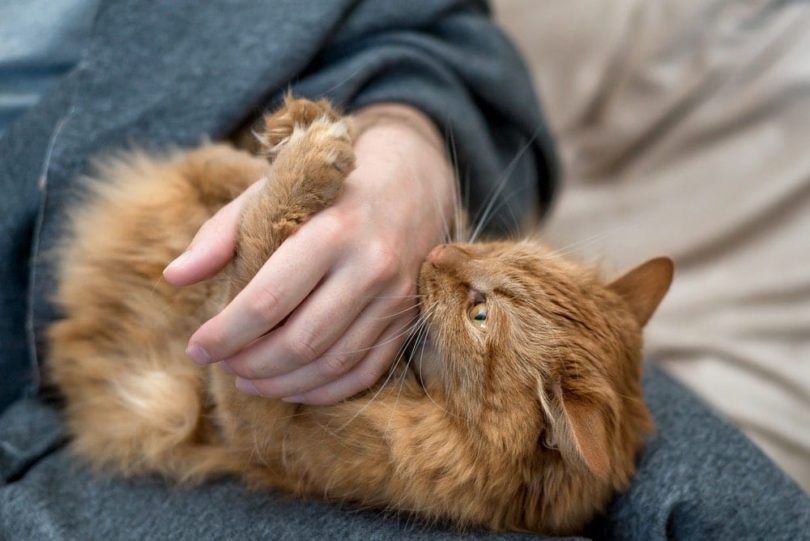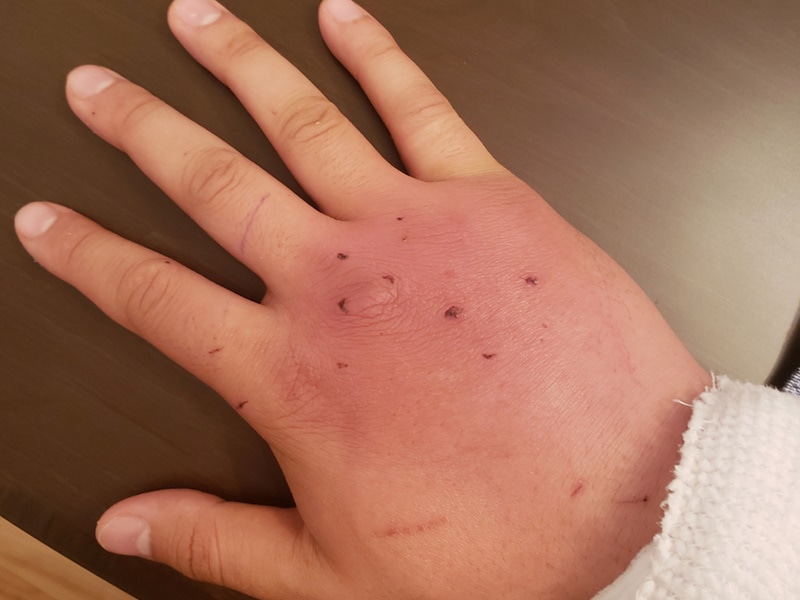A Cat Bit Me, Help! 6 Vet-Reviewed Steps to Take
Updated on

Cats are amazing animals that have been beloved for centuries. Seeing one of these critters curled up in your home is a warming feeling. However, cats are also known for having a bit of a temper. Cats want things their way. This goes for the cat living in your home and the stray cats navigating your neighborhood. The independence and willingness to protect themselves are deeply ingrained in these animals.
If a cat, including your own, gets upset or even gets too playful, bites are a possibility. Unfortunately, even if the cat that bites you has been vaccinated, the chance of infection is still there. Let’s take a look at what steps you should follow if a cat bites you so you can keep yourself healthy without having to avoid cats altogether.
Why Cat Bites Are Dangerous
When a cat bites you, especially if it isn’t your cat, it can be a scary situation. Of course, everyone’s mind immediately goes to rabies. The rabies virus attacks the central nervous system and is fatal in most cases. However, rabies isn’t the only thing you should worry about when it comes to cat bites. There are several infections a cat can carry.
Considering a cat’s needle-like teeth can easily break a human’s skin, it’s understandable that they could pass something along. Not only are general bacterial infections possible, but so is Cat Scratch Disease or Cat Scratch Fever. This illness comes from a bacteria and normally infects cats that have been exposed to flea bites.

The 6 Steps to Take if a Cat Bit You
If you’re a cat lover, it’s difficult to avoid interacting with a cat when you meet one. This opens you up to bites from not only your cats but also cats you may see around your neighborhood. That’s why it’s so important to know what to do when a cat bites you so you can keep yourself protected. Let’s take a look at those steps now so you can continue your life as a cat lover without any added fear.
1. Flush the Wound
If a cat has bitten you, and the skin is broken, you should act immediately. The first step is to flush out the wound using water. This will irrigate the wound and help remove any bacteria that is still present on the skin.
2. Wash the Wound
Using soap and water, gently clean the wound. You should avoid using any harsh chemicals or disinfectants as they can harm your skin and even slow the healing process. You can make a salt solution that does a great job cleaning the wound. This mixture is made by mixing 1 teaspoon of table salt and 2 cups of warm water. Once the wound is cleaned, make sure to rinse for several minutes.

3. Control the Bleeding
As we’ve already mentioned, a cat’s teeth are like tiny needles. In many cases, the wound will bleed. To control the bleeding, after the wound has been flushed and cleaned, use a clean bandage or dressing. Apply direct pressure to the bandage to slow things down.
4. Use Antibiotic Cream
Once the bleeding is under control, use antibiotic cream. This will help to start treating the wound. After applying the cream, cover it with a sterile bandage.
5. Elevate
Often cat bites cause swelling. To prevent this and help fight infection, you can elevate the wound above your heart. In most cases, this should be done for 15–30 minutes several times a day. Your physician may even suggest doing this after you visit them.

6. Visit Your Doctor
Unfortunately, most cat bites drive unwanted bacteria into your skin. While you washed the wound and did your best to treat it, things can still get worse. Within 24–38 hours, a serious infection can occur. To avoid this, go see a doctor so they can check things out. This is especially true if the cat that bit you is a stray or a cat you aren’t familiar with.
Signs of Infection from a Cat Bite
If you have a cat in your home, it’s good to know the signs you should watch for when it comes to infectious cat bites and scratches. Here’s a look at the most common signs you should know.
- Redness and discoloration
- Swelling
- Inflammation
- Bumps or blisters around the bite area
- Warmth
Unfortunately, some signs of infection can be more serious than others. Serious bite infection signs can include:
- Pus or fluid seeping from the wound
- Red streaks near the wound
- Numbness around the wound
- Fever or chills
- Swollen lymph nodes
- Fatigue
- Muscle weakness
If you experience any of these signs, return to your physician immediately.
What Happens to the Cat?
We’ve already mentioned how dangerous the rabies virus is. Due to this, most doctors are required to report any type of animal bite. If the cat that bit you is known, it could be placed under quarantine while its rabies vaccination status is checked. This quarantine often lasts 10–14 days but can be longer.
For stray cats you aren’t familiar with, try to snap a photo of the cat in question. You can then contact your local animal control or health department to let them know what transpired. This is a good thing to do so they can observe the animal and ensure it isn’t a danger to other people or animals in your area.
Final Thoughts
While some people simply brush off a cat bite, this isn’t the smart way to go about things. With the risk of infection being so high, you should act quickly to protect yourself. Letting local officials know about what took place can also protect others who may find themselves in the same situation. If it’s your cat that bites you, and you know they are fully vaccinated, you should still speak to your doctor. Just because your cat is healthy doesn’t mean they can’t pass you an infection without meaning to do it.
Featured Image Credit: Nau Nau, Shutterstock













